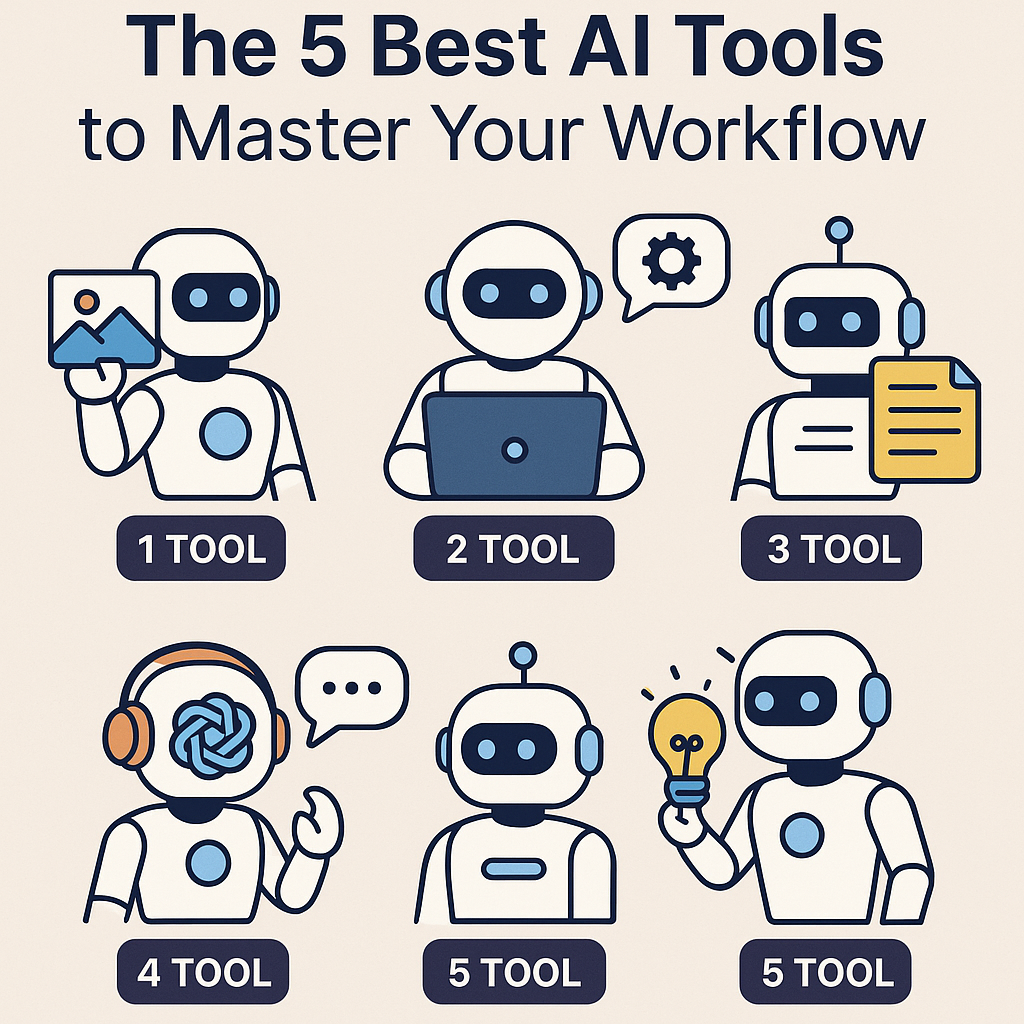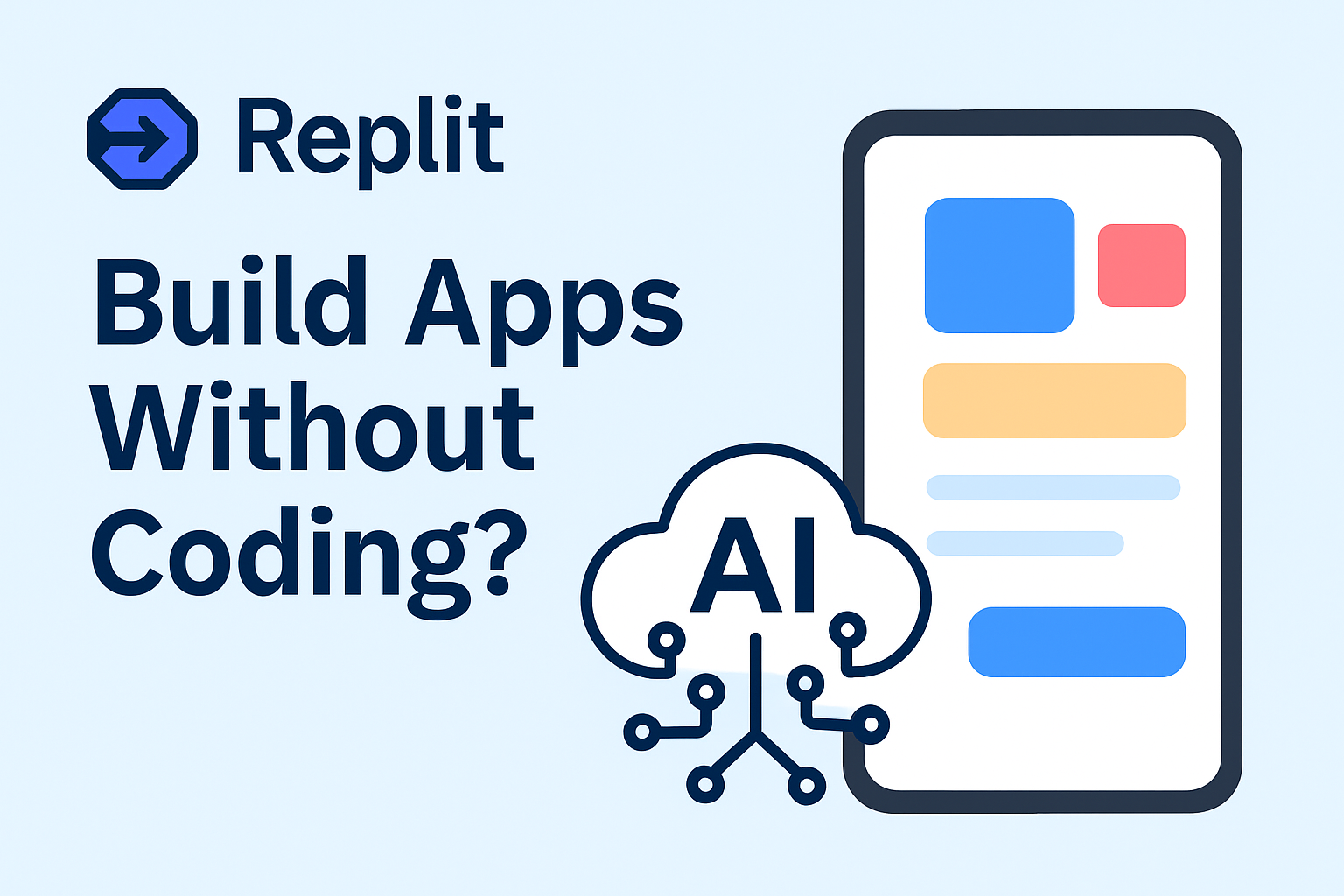This post will help you review five best AI tools specifically designed to enhance productivity in your daily life. It will cover tools that automate repetitive tasks, streamline workflows, assist in decision-making, and manage projects more efficiently. In This blog will focus on practical AI tool applications, key features are they are ease of integration, and potential ROI for professionals and businesses. Examples could include AI-powered assistants, advanced schedulers, or intelligent data analysis tools identified during research.
In the rapid evolving of the modern world we have to have modern workplace, efficiency and productivity AI has given more impact force offering modern and innovative tools designed to automated tasks, workflow streams and to unlock new highs of our performance As we are in 2025, several AI-powered productivity tools have risen to prominence, fundamentally changing how professionals and businesses operate these tools are not just machine learning , Concepts these are practically proven concepts to enhance your work with AI

Perplexity AI
It is One of the standout categories where AI is making a significant impact is smart search and information gathering within minutes as same as thesis research and it works as a AI-powered answer engine and has less research time compared to other tools for looking up technical specifications, or exploring complex topics and can ask follow up questions enabling deeper dives into subjects without starting a new search. For professionals who rely heavily on accurate and timely information – researchers, analysts, writers, students – Perplexity AI acts as a powerful research assistant, boosting efficiency by delivering concise, sourced answers almost instantaneously. Its integration potential lies in its ability to be used alongside other tools, feeding synthesized information into reports, presentations, or strategic documents, thereby accelerating the entire knowledge work pipeline.
Zapier
It is the automation of workflows is a cornerstone of AI-driven productivity and known for its no code for various web applications has significantly enhanced its offerings with AI and allows users to create autonomous AI agents that can perform complex, multi-step tasks across different software platforms based on natural language instructions Imagine instructing an agent to monitor specific email inboxes, extract key information, and update a CRM record, draft a response, and notify a team member on Slack – all without manual intervention. This level of automation tackles not just repetitive tasks but entire processes, freeing up significant human capital Zapier’s extensive library of app integrations makes its AI agents particularly powerful, enabling seamless automation across the diverse software ecosystems common in modern businesses. This tool is invaluable for operations managers, marketing teams, sales professionals, and anyone looking to optimize recurring workflows.
Claude 3
It has wide range of tasks. Beyond basic text generation, Claude 3 excels in complex reasoning, data analysis, code generation, and nuanced content creation Its larger context window allows it to process and analyze extensive documents – reports, research papers, codebases – providing summaries, extracting key insights, or identifying inconsistencies. For professionals involved in writing, coding, legal analysis, or strategic planning, Claude 3 acts as an intelligent collaborator. It can draft emails, reports, and marketing copy, debug code, translate languages, and even brainstorm ideas. Its focus on safety and reliability also makes it a suitable choice for businesses concerned with ethical AI deployment. The productivity gains come from accelerating content creation, improving the quality of analysis, and providing assistance in complex problem-solving, making it a powerful asset across numerous roles.
Microsoft Copilot
Integrated AI assistants within existing work suites represent another major productivity trend. Microsoft Copilot, deeply embedded within the Microsoft 365 ecosystem (Word, Excel, PowerPoint, Outlook, Teams), brings AI capabilities directly into the applications professionals use daily. Copilot can summarize lengthy email threads, draft documents based on prompts, create presentations from outlines, generate formulas and analyze data in Excel, and even summarize meetings in Teams. This seamless integration minimizes context switching and allows users to leverage AI without leaving their familiar work environment. The benefit lies in enhancing the efficiency of everyday tasks. For instance, preparing for a meeting can be expedited by having Copilot summarize relevant documents and communications. Drafting reports becomes faster with AI assistance in generating initial content and refining language. The ROI is realized through incremental time savings across a multitude of common tasks, accumulating into significant overall productivity improvements for organizations heavily invested in the Microsoft ecosystem.
Canva
the visual aspect of productivity, particularly in design and marketing, has been revolutionized by AI tools like Canva. While known primarily as a user-friendly design platform, Canva has integrated a suite of AI-powered features under its ‘Magic Studio’ umbrella. These include Magic Write (text generation), Magic Design (automatic template generation based on prompts or images), Magic Edit (AI-powered photo editing), and tools for generating images or even presentations from simple text descriptions. This democratizes design creation, allowing individuals and teams without specialized design skills to produce professional-looking marketing materials, social media posts, presentations, and other visual content quickly. For marketing teams, small businesses, and content creators, Canva’s AI features dramatically accelerate the content creation process, reduce reliance on specialized designers for everyday tasks, and ensure brand consistency. The productivity boost comes from simplifying and speeding up visual content workflows, enabling faster campaign launches and more agile content strategies.
In conclusion, the AI productivity tools landscape in 2025 offers a diverse range of solutions tailored to various professional needs. From intelligent information retrieval with Perplexity AI and sophisticated workflow automation via Zapier Agents, to versatile content creation and analysis with Claude 3, seamless integration with Microsoft Copilot, and accelerated visual design through Canva’s AI features, these tools are empowering individuals and organizations to achieve more with less effort. Embracing these technologies is no longer just an option but a strategic imperative for staying competitive and efficient. By carefully selecting and integrating the right AI tools into their workflows, professionals can significantly enhance their productivity, reduce manual burdens, and focus on higher-value activities that drive innovation and growth.


